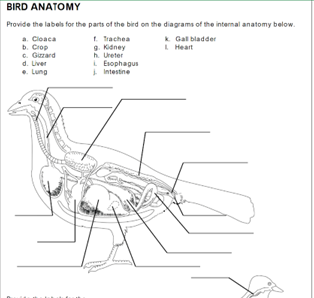
Contents
Learning Outcome Time required Tools or equipment required Summary of the activity What to do Tips how to implement the topic to school curriculumLearning Outcome
Engaging in discussions about vegan or vegetarian diets often sparks various reactions. Some argue the necessity of animal protein for growth, emphasizing our omnivorous nature. The critical question arises: how are these living organisms treated, especially in the context of meat consumption? The adage "you are what you eat" prompts us to consider the origins of our food.
Students will delve into:
- Understanding which parts of animals are consumed.
- Exploring the utilization of different animal parts in food processing.
- Reflecting on whether visualizing the animal behind the meat consumption enhances appreciation.
- Differentiating between biological and conventional farming practices.
Time required
A short project spanning four to six lessons.
Tools or equipment required
Embark on a brief journey to a local market near your school, focusing on butcher stalls or fish market stands. Students will explore the anatomy and organ systems of animals, gaining insights into the parts of animals sold at these markets.
Students should already be familiar with these topics:
- Biology: Anatomical study of animals, organ systems.
- Understanding the anatomy of animals bred for consumption (e.g., farm animals).
- Awareness of ecological "bio" versus conventional farming practices.
Summary of the activity
In this engaging sustainability-focused activity, secondary school students explore the intricacies of meat consumption and production by visiting a local market. Divided into groups, they investigate the organs sold at butcher stalls, delving into topics such as meat origin, farming practices (bio vs. conventional), and the impact of living conditions on food quality. Through careful observation and reflection, students gain insights into the anatomy of animals bred for consumption, emphasizing the importance of sustainable food choices. The project culminates in group presentations, where students share their findings and discuss the broader implications of their food choices, integrating biology, ecology, and economics into a comprehensive learning experience.
What to do
1. Introduction to the Topic:
- Form groups of four in the classroom.
- Help students formulate questions for the market visit.
- What parts of cows, pigs, sheep, and chickens are sold?
- What happens to unused parts of cows?
2. Implementation - At the Farmers market:
Students gather information about animal organs sold. They should inquire about:
- Meat origin and knowledge about farmers.
- Age of animals at slaughter.
- Transportation details.
- Organic or conventional status.
Encourage students to sketch observed organs for careful observation.
3. Presentation:
Allocate at least one hour for group discussions and presentation preparation.
Students present findings through videos, slideshows, drawings, etc.
Groups create worksheets for classmates.
Example:
One group covers chickens, addressing anatomy, food production, size, biologically bred vs. conventionally bred, size/age at slaughter, price, and resource usage.

Source: https://www.easyteacherworksheets.com/pages/pdf/science/answer/twopages/animal-anatomy/26.html
4. Reflection:
- Students recognize the connection between animal growth, breeding, and sustainability.
- Understand the impact of an animal's living conditions on food quality.
- Consider the energy and water requirements for meat production.
Tips how to implement the topic to school curriculum
- Biology: Incorporate into the study of vertebrate anatomy, food, and digestion, and ecological principles.
- Economics: Compare prices to further enrich the learning experience.
